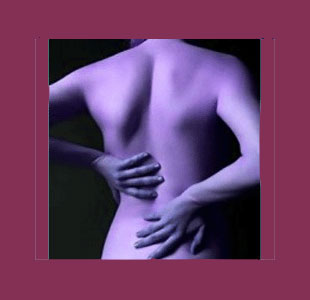
Scoliosis in women is much more common than in men. Additionally, scoliosis tends to express itself worse in women and progress further than in men. Why are these indisputable facts true? What makes women so much more prone to lateral spinal curvature than their male counterparts?
This fascinating and enlightening post delves into answering these crucial questions. We will explore why girls tend to develop idiopathic adolescent spinal curvatures more often than boys and why adult women tend to suffer from symptomatic forms of developed scoliosis later in life, as well.
Development of Scoliosis in Women
Girls are more than 10 times more likely than boys to develop scoliosis during their adolescent years. These cases of female idiopathic scoliosis account for the vast majority of all lateral spinal curvatures seen in the world today. Why do girls tend to develop scoliosis more frequently than males?
Adolescent scoliosis is often seen in families affecting generation after generation. This makes scientists believe there are definitive genetic markers that are responsible for scoliosis, although proof of these markers has yet to be discovered. Additionally, the genes that may be passed down causing the development of scoliosis through primary or secondary anatomical changes tend to run on the female side of the family, going from grandmother to mother to daughter. Males can also pass scoliosis down genetically, but this seems to occur far less often and also far less severely in terms of the scoliotic manifestation in offspring.
Scientists have also found potential links to the hormone leptin and activity of the sympathetic nervous system and the development of scoliosis in adolescent girls. It is not known if these changes are causative, contributory or consequential in relation to the spinal curvature condition, but research is ongoing.
Adult Scoliosis in Mature Women
Mature and elderly women also tend to suffer symptomatic developed scoliosis more frequently than men. These forms of scoliosis used to be more common years ago than they are today, since female lifestyle has changed much in the past few decades, with more women working and being more actively involved in fitness and proactive wellness care than decades ago.
Women historically tend to have a greater chance of developing low bone density than men of equal age. As mentioned, this gap has narrowed now with more women eating better and enjoying skeletal loading exercise throughout life. Women also tended to have a greater chance of being considered obese in decades past, although now that gap has closed too, with men catching up in obesity statistics.
Both low bone density (osteopenia and subsequent osteoporosis) and obesity can be contributory to scoliosis development. Therefore, we witness many older women developing scoliosis that is not seen in men of equal age. Unfortunately, compression fractures can lead to scoliosis and vice versa, increasing the potential of the curvatures having serious symptomatic potential, especially in elderly women.
Scoliosis in Women Progression
Not only do girls and women have a greater frequency of developing scoliosis, but they also have a greater chance of having their conditions progress further and more clinically significantly than boys and men. This phenomenon is still being researched as well, but doctors have several theories that may explain why scoliosis progresses worse in women:
In cases of idiopathic scoliosis, quick and dramatic changes in hormones and body composition tend to occur much more rapidly in girls than in boys. These changes might be causative and/or contributory to the rapid onset and progression of lateral spinal curvature.
In cases of adult scoliosis in older women, the nutritional, postural and general health characteristics that help scoliosis to develop also tend to be worse in women of age, leading to more significant expressions of atypical curvature of the backbone.
Female Scoliosis Exceptions
Interestingly, cases of infantile scoliosis tend to occur slightly more often in boys. This fact lends more support for the above theories related to rapid anatomical changes and hormonal factors being responsible for the exponential female cases numbers of adolescent scoliosis compared to male, as well as the increased risk of female adult scoliosis that can be linked to lifestyle factors.
Additionally, in cases of early juvenile scoliosis, males tend to outnumber females in affected demographics, while in later years of juvenile scoliosis development, females outnumber males as their anatomies and hormonal systems mature more rapidly than in male counterparts.





